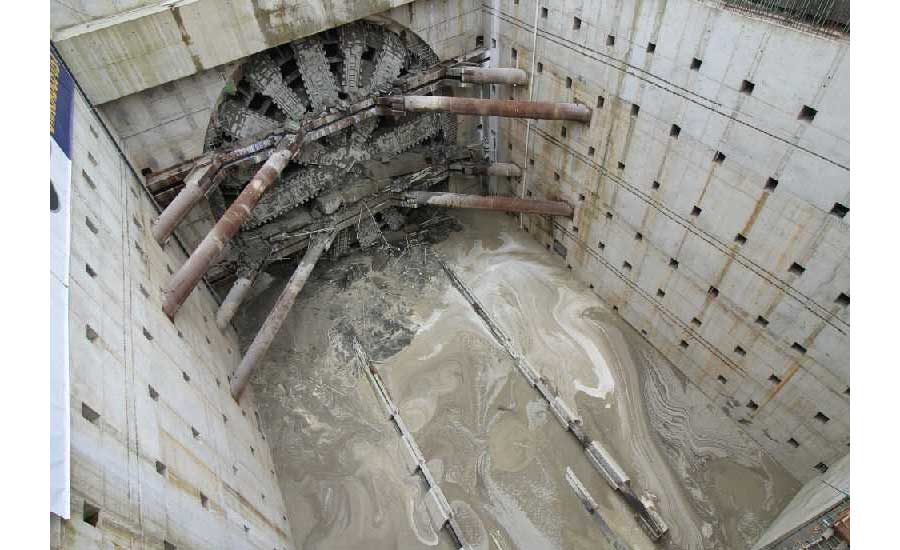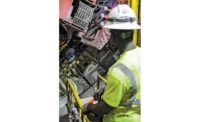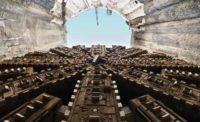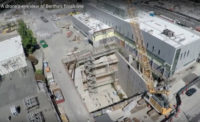The final five ft of a 1.7-mile underground bore for what was once the world’s largest tunnel-boring machines in downtown Seattle marked a major milestone for a much-maligned project.
Arriving in the receiving pit April 4 near the Space Needle roughly 29 months late, the next phase of replacing the aging Alaskan Way Viaduct with an underground State Route 99 can move forward toward an expected opening date of 2019.
Bertha, 330-ft-long and 57.5-ft in diameter, took off amidst fanfare in July 2013, four years after the $3.1-billion-dollar project received the green light from government officials. But less than six months and just 1,025 ft into the 9,270-ft project, Bertha broke down after overheating underground. Hitachi Zosen, Bertha’s maker, claims the cause of the stoppage was damage caused by hitting a steel pipe, which has sparked litigation between owners Washington State Dept. of Transportation, the machine’s maker and the project contractor, Seattle Tunnel Contractors.
Below one of the least dense section of the tunnel drive, Seattle Tunnel Partners dug a repair pit and replaced the main shaft of Bertha, as well as reinforced multiple cutting components, a project that resulted in a restart of the mining two years later in January 2016 and untold hundreds of millions in overruns.
Since then, Bertha’s northward push toward the receiving pit proved practically flawless, even as it mined under the viaduct, Pike Place Market and downtown Seattle.
Once Bertha churned through the final five-ft concrete wall and onto a cradle in the receiving pit, crews started the four-month-long process of cutting up the machine’s cutterhead—alone weighing over four million pounds—for removal via crane and truck.
Crews will spend the next two years building a double-deck highway in the tunnel.






Post a comment to this article
Report Abusive Comment